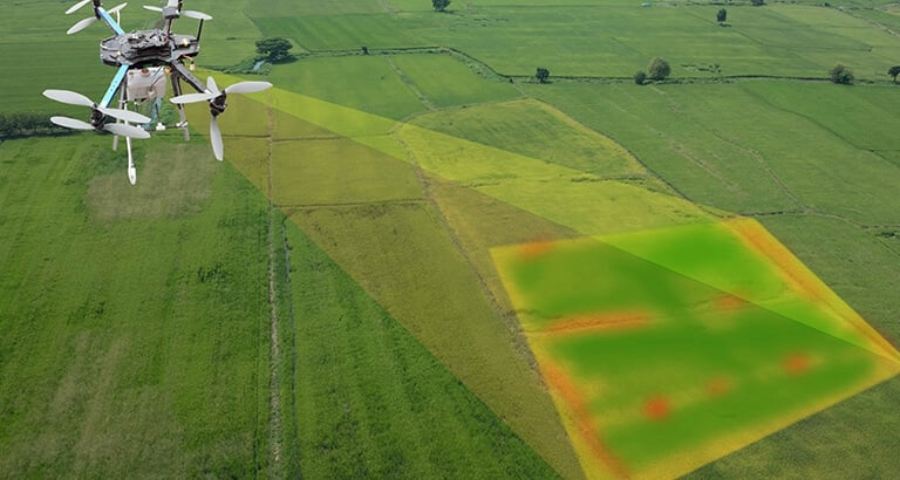Machine Learning for Sustainable Agriculture
For effective agricultural production, one important field of study to concentrate on is agriculture 4.0 (A4.0). A number of novel computational techniques have been developed for agricultural crop products. A few significant elements, though, were difficult to maintain and keep an eye on as quickly as they can now. Techniques for machine learning and computational intelligence have been developed to monitor, analyze, quantify, and forecast agricultural crops. Future predictions were made simple, accurate, and current thanks to the robustness of machine learning techniques and computational methods. Among the popular fields in theses that are utilized for computational analysis of the acquired data is machine learning. Future predictions can be made by processing and analyzing the historical data. Crop yield prediction is a key field of study in agricultural science to be aware of potential future effects related to agricultural
AI’s advantages for agriculture
The terms artificial intelligence (AI) and agriculture may have seemed like an odd combination until recently. After all, while even the most basic AI has only recently been developed, agriculture has been the foundation of human civilization for millennia, supplying both sustenance and fostering economic growth. All industries, however, are introducing novel ideas, and agriculture is no different. Farming practices have undergone a revolution due to the swift progress in agricultural technology in recent times. The sustainability of our food system is being threatened by global issues like population growth, climate change, and resource scarcity, so these innovations are becoming more and more important. By introducing AI, many problems are resolved and the negative aspects of traditional farming are lessened.
Using Machine Learning in the Latest Technology for Agriculture
Traditional farming methods have been revolutionized by machine learning, which has found creative applications in agriculture in recent years. Precision agriculture is one of the latest techniques; machine learning algorithms examine multiple data sources to maximize agricultural techniques. The following are some important areas in which machine learning is having a big impact on agriculture
What makes machine learning relevant to agriculture?
All of that can be monitored by machine learning algorithms, which can also provide farmers with a precise image of the harvest’s quality prior to it entering the processing facility. Crop illnesses also reduce yield. Therefore, identifying, diagnosing, and warning the farmer of issues is also very beneficial.
Can technology improve the sustainability and efficiency of agriculture?
Although technology is sometimes viewed as the solution to all of today’s problems, it actually only makes up a portion of the picture and works best when combined with other strategies. For instance, methane, a gas produced by farm animals, is responsible for the vast majority of greenhouse gas emissions in this industry. Only a decline in the demand for dairy and meat will result in lower emissions. While Generation Z is already enthusiastically adopting a more plant-based diet, a generation may pass before people fully embrace this lifestyle shift. Genetically modified (GM) crops are expected to increase yield and become resistant to diseases and pests, which will lessen the need for fertilizer and pesticides. However, this also
Crop Management and Surveillance:
In order to track crop health, detect illnesses, and determine whether fertilization or irrigation is necessary, machine learning algorithms can examine satellite or drone footage. This makes it possible for farmers to implement focused measures that cut waste and raise crop yields overall.
Utilizing Predictive Analytics to Forecast Yield:
In order to forecast future yields, machine learning algorithms can analyze historical data on crop performance, soil properties, and weather patterns. Farmers can use this information to make well-informed decisions regarding resource allocation, planting, and harvesting.
Control of Weeds and Pests:
The ability of ML systems to distinguish between weeds and crops makes it possible to apply herbicides precisely. Likewise, their ability to recognize insect infestations facilitates the precise application of pesticides. This lessens the impact on the environment and the use of chemicals
Robots and Automated Machinery:
Autonomous farming machinery, such as tractors and harvesters, incorporates machine learning. These autonomous devices can efficiently travel fields, plant seeds, and harvest crops by utilizing sensors and data analysis.
Soil Health Surveillance:
Machine learning models evaluate sensor data to determine the composition and health of the soil. With the use of this data, farmers are better able to make decisions on fertilizer management, crop rotation, and other techniques that improve soil fertility.
Supply Chain Enhancement:
Supply chain optimization is achieved through the application of machine learning, which predicts demand, enhances logistics, and cuts waste. This guarantees the prompt and effective delivery of crops to markets.
Early Detection and Disease Prediction:
To forecast the chance of disease outbreaks, machine learning models can evaluate a variety of data, such as historical disease outbreaks and weather patterns. Early disease detection minimizes crop losses by enabling prompt intervention to stop the spread of the illness.
Source

